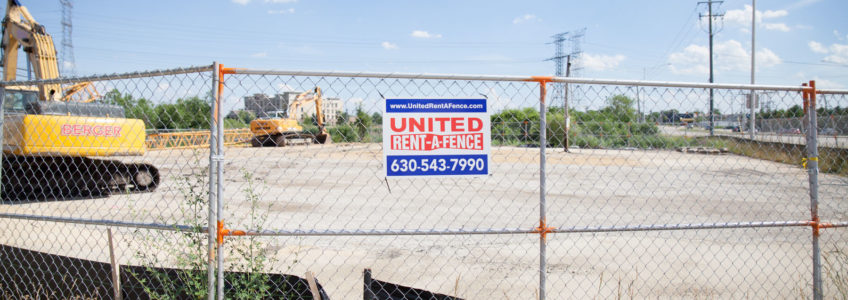
Accurate construction project estimation is crucial for the success of any construction project. It involves predicting the costs, resources, and timelines required to complete a project. With accurate estimation, projects can avoid budget overruns, delays, and other complications leading to dissatisfaction among clients and stakeholders. On the other hand, precise estimation can help budget and resource allocation, manage client expectations, and ensure that projects are completed on time and within budget.
Understanding the Importance of Accurate Construction Project Estimation
Accurate estimation plays a vital role in budgeting and resource allocation. By accurately estimating the costs and resources required for a project, construction companies can allocate their resources effectively and ensure they have enough funds to complete the project. This helps in avoiding budget overruns and financial difficulties during the project.
In addition, accurate estimation helps in managing client expectations. When clients clearly understand the costs and timelines involved in a project, they are less likely to be surprised by unexpected delays or additional fees. This leads to better client satisfaction and helps build long-term relationships with clients.
Key Factors to Consider in Construction Project Estimation
Several key factors must be considered in construction project estimation. First and foremost, it is essential to understand the project’s scope and requirements. This includes understanding the client’s needs and expectations and any specific requirements or constraints that may impact the project.
Site conditions and logistics are also important factors to consider. The location of the project site, access to resources, and any logistical challenges can impact the estimation process. For example, a project in a remote area with limited access to materials and labor may require additional resources and time to complete.
Project complexity and size also play a role in estimation. More complex projects with multiple phases or intricate designs may require more time and resources. Similarly, larger projects may require more materials and labor, impacting the estimation process.
Utilizing Historical Data for More Accurate Estimations
One effective way to improve the accuracy of construction project estimation is by utilizing historical data. Historical data refers to data from past projects that can be used to identify patterns, trends, and common mistakes in estimation.
By analyzing historical data, construction companies can gain insights into similar projects’ costs, resources, and timelines. This can help identify potential risks and challenges during a project and avoid common estimation mistakes.
Furthermore, historical data can help benchmark and set realistic expectations for clients. By comparing the current project with similar past projects, construction companies can provide clients with accurate estimates and timelines based on real-world data.
Effective Communication and Collaboration for Successful Estimation
Effective communication and collaboration are essential for successful construction project estimation. Project stakeholders, including clients, architects, engineers, and contractors, need to work together to gather accurate information and make informed decisions.
Effective communication ensures that all parties understand project requirements, constraints, and expectations clearly. This helps avoid misunderstandings and ensures everyone is on the same page.
Collaboration is also important for accurate estimation. By working together, project stakeholders can gather precise information about the project site, materials, labor availability, and other factors impacting estimation. This collaborative approach helps make more informed decisions and improves the accuracy of the estimation process.
Project managers are crucial in facilitating communication and collaboration among project stakeholders. They act as a bridge between the client and the construction team, ensuring that all parties are informed and involved in the estimation process.
Leveraging Technology and Software Tools for Construction Project Estimation
Technology and software tools can significantly enhance the accuracy of construction project estimation. Various software tools are available that can automate calculations, generate accurate estimates, and improve the overall efficiency of the estimation process.
One such tool is Building Information Modeling (BIM). BIM is a digital representation of a project’s physical and functional characteristics. It allows construction professionals to create virtual models of buildings and infrastructure, which can be used for accurate estimation.
BIM software can generate accurate quantity takeoffs, which is essential for estimating material and labor costs. It can also help identify potential clashes or conflicts in the design, which can impact the estimation process.
In addition to BIM, other software tools are available that can automate calculations, generate accurate estimates, and improve the overall efficiency of the estimation process. These tools can save time and effort, reduce errors, and improve the accuracy of construction project estimation.
The Role of Risk Assessment in Construction Project Estimation
Risk assessment is an essential aspect of construction project estimation. It involves identifying potential risks and uncertainties that may impact the project costs, timelines, and outcomes.
Construction companies can identify potential risks, such as weather conditions, labor shortages, material price fluctuations, and regulatory changes, by conducting a thorough risk assessment. This helps develop contingency plans and allocate resources accordingly.
Risk assessment also helps in setting realistic expectations for clients. By communicating potential risks and uncertainties upfront, construction companies can manage client expectations and avoid surprises during the project.
To incorporate risk assessment into the estimation process, construction companies can assign probabilities and impacts to each identified risk. This allows them to quantify the potential impact of each risk on the project costs and timelines. Construction companies can develop more accurate estimates that account for potential uncertainties by factoring these risks in the estimation process.
Tips for Estimating Material and Labor Costs in Construction Projects
Accurate estimation of material and labor costs is crucial for successful construction projects. Here are some tips for estimating material and labor costs:
- Research and obtain accurate cost data: It is crucial to get accurate cost data for materials and labor. Materials and outsourced work such as construction rental fences are budgeted by contacting suppliers, conducting market research, and consulting industry experts. By obtaining accurate cost data, construction companies can develop more accurate estimates.
- Factor in inflation and market fluctuations: Material and labor costs can fluctuate due to inflation, market conditions, and other factors. It is essential to factor in these fluctuations when estimating costs. This can be done using historical data, consulting industry reports, and considering market trends.
- Consider the quality of materials and labor: The quality can impact project costs. It is important to consider the project’s quality requirements when estimating costs. Higher-quality materials and labor may come at a higher price, which needs to be factored into the estimation process.
- Account for waste and spoilage: Construction projects often generate waste and spoilage, impacting material costs. It is important to account for waste and spoilage when estimating material costs. This can be done by using industry standards or historical data.
- Consider productivity rates: Labor productivity rates can vary depending on the project’s complexity, site conditions, and other factors. It is vital to consider productivity rates when estimating labor costs. This can be done by consulting industry benchmarks or using historical data.
The Art of Estimating Project Timelines and Deadlines
Estimating project timelines and deadlines is a challenging task in construction projects. Several factors need to be considered, including dependencies, critical path, and potential delays.
Dependencies refer to the relationships between different tasks or activities in a project. Some tasks may depend on the completion of other tasks before they can start. It is crucial to identify and consider these dependencies when estimating project timelines.
The critical path is the sequence of tasks that determines the shortest possible duration for completing a project. Identifying the critical path and considering it when estimating project timelines is essential. Any delays or changes in the critical path can impact the overall project timeline.
It is essential to break down the project into smaller tasks or activities to estimate project timelines and deadlines. Each task should have a clear start and end date, dependencies, and resources required. By estimating the duration of each task and considering dependencies, construction companies can develop more accurate project timelines.
Managing project timelines and avoiding delays is crucial for the success of construction projects. Here are some tips for managing project timelines:
1. Set realistic deadlines: It is important to set realistic deadlines that consider the project’s complexity, available resources, and potential risks. Unrealistic deadlines can lead to rushed work, poor quality, and delays.
2. Monitor progress regularly: Regularly monitoring the progress of the project allows construction companies to identify any potential delays or issues early on. This will enable them to take corrective actions and avoid further delays.
3. Communicate with stakeholders: Effective communication with stakeholders is crucial for managing project timelines. By keeping stakeholders informed about the progress of the project and any potential delays, construction companies can manage expectations and avoid surprises.
4. Allocate resources effectively: Proper resource allocation is essential for managing project timelines. It is crucial to ensure that resources are available when needed and that they are allocated effectively to avoid delays.
Avoiding Common Pitfalls in Construction Project Estimation
Construction companies should avoid several common pitfalls when estimating construction projects. These pitfalls can lead to overestimation or underestimation of costs, resources, and timelines, harming the project’s success.
One common pitfall is relying too heavily on past projects without considering the unique characteristics of the current project. Each project is unique and may have different requirements, constraints, and risks. It is essential to consider these factors when estimating a project and not rely solely on past data.
Another common pitfall is failing to account for unforeseen circumstances. Construction projects are often subject to unexpected weather conditions, labor shortages, or regulatory changes. When estimating a project, it is important to factor in these potential risks and uncertainties.
Additionally, construction companies should avoid overestimating or underestimating costs and resources. Overestimation can lead to inflated budgets and unnecessary expenses, while underestimation can lead to budget overruns and delays. Gathering accurate data, conducting thorough research, and consulting industry experts to develop realistic estimates are essential.
Continuous Improvement: Evaluating and Adjusting Estimation Processes for Greater Success
Continuous improvement is essential for the success of construction project estimation. By evaluating and adjusting estimation processes, construction companies can learn from past projects, identify areas for improvement, and enhance the accuracy of future estimates.
One way to evaluate estimation processes is by gathering feedback from project stakeholders. This can be done through surveys, interviews, or meetings. By gathering feedback, construction companies can identify issues or challenges in the estimation process and make necessary adjustments.
Another way to improve estimation processes is by learning from past projects. By analyzing the outcomes of past projects, construction companies can identify any discrepancies between estimated and actual costs, resources, and timelines. This helps identify areas for improvement and make necessary adjustments in the estimation process.
Furthermore, construction companies can invest in training and development programs for their estimators. Estimators can enhance their skills and knowledge in estimation techniques, industry trends, and software tools by providing ongoing training and development opportunities. This helps improve the accuracy of estimates and ensures that estimators are up-to-date with the latest industry practices.
Conclusion
Accurate construction project estimation is crucial for the success of any construction project. It helps budget and allocate resources, manage client expectations, and ensure that projects are completed on time and within budget. Construction companies can develop more accurate estimates by considering key factors such as project scope, site conditions, and project complexity.
Utilizing historical data, leveraging technology and software tools, and conducting risk assessments can further enhance the accuracy of construction project estimation. Effective communication and collaboration among project stakeholders are also essential for accurate estimation. By continuously evaluating and adjusting estimation processes, construction companies can improve their estimation techniques and ensure greater success in future projects.






